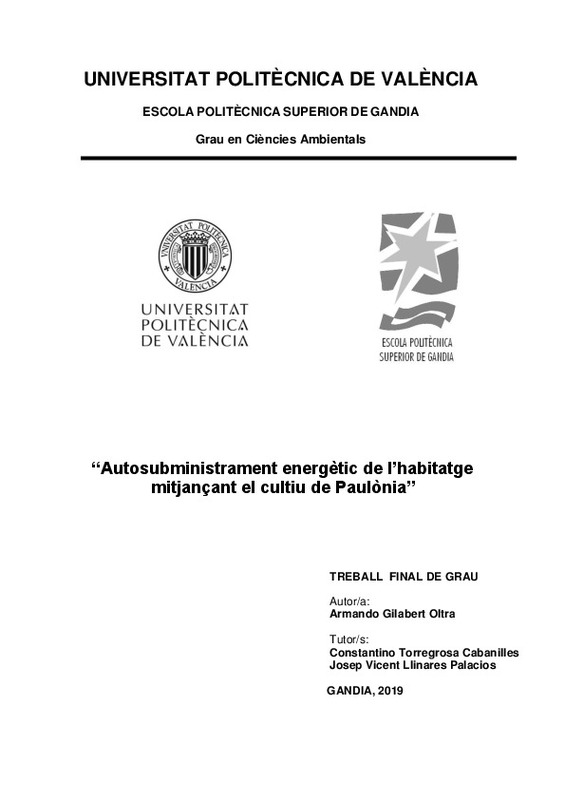JavaScript is disabled for your browser. Some features of this site may not work without it.
Buscar en RiuNet
Listar
Mi cuenta
Estadísticas
Ayuda RiuNet
Admin. UPV
Autosubministrament energètic de l'habitatge mitjançant el cultiu de Paulònia
Mostrar el registro completo del ítem
Gilabert Oltra, A. (2019). Autosubministrament energètic de l'habitatge mitjançant el cultiu de Paulònia. Universitat Politècnica de València. http://hdl.handle.net/10251/131075
Por favor, use este identificador para citar o enlazar este ítem: http://hdl.handle.net/10251/131075
Ficheros en el ítem
Metadatos del ítem
| Título: | Autosubministrament energètic de l'habitatge mitjançant el cultiu de Paulònia | |||
| Autor: | Gilabert Oltra, Armando | |||
| Director(es): | ||||
| Entidad UPV: |
|
|||
| Fecha acto/lectura: |
|
|||
| Resumen: |
[CA] El ritme de creixement del consum energètic a la nostra societat no és sostenible, les
reserves de combustibles fòssils són limitades i a més a més la seua combustió és en
bona part responsable del canvi climàtic i ...[+]
[EN] The growth of the energy consumption in our society is not sustainable, fossil fuel reserves are limited and its combustion is largely responsible for the climatic change and the atmospheric pollution in many cities. ...[+]
|
|||
| Palabras clave: |
|
|||
| Derechos de uso: | Reserva de todos los derechos | |||
| Editorial: |
|
|||
| Titulación: |
|
|||
| Tipo: |
|
Localización
recommendations
Este ítem aparece en la(s) siguiente(s) colección(ones)
-
EPSG - Trabajos académicos [5004]
Escuela Politécnica Superior de Gandia







